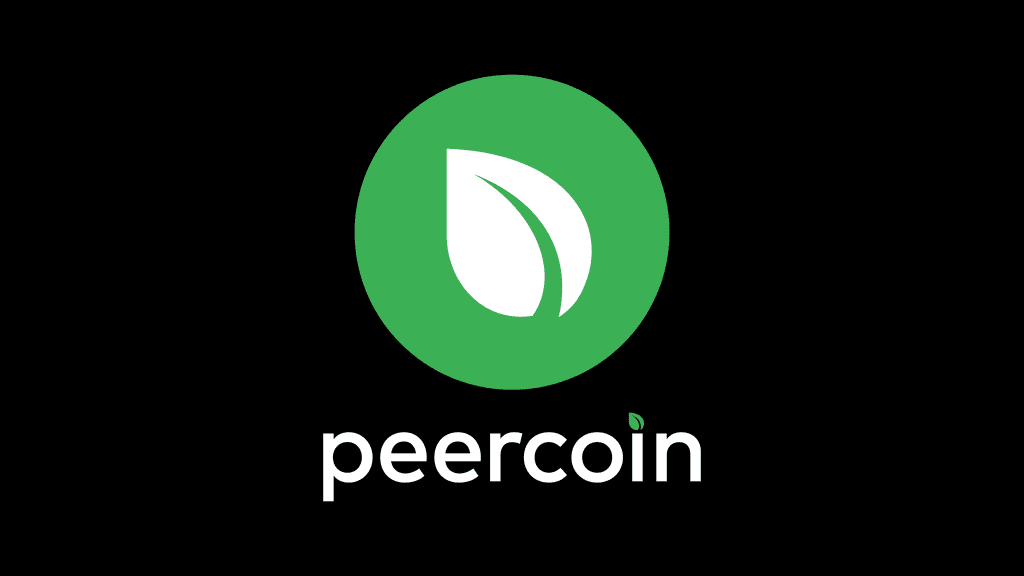
Peercoin
Peercoin is an altcoin. Altcoin is a cryptocurrency that is not bitcoin. Altcoins often present themselves as a better alternative to Bitcoin; Peercoin is the first altcoin to target Bitcoin’s high energy consumption problem. In addition to energy efficiency, Peercoin developers aim to provide high security.
The Bitcoin system requires miners to solve complex mathematical problems to support transactions on the blockchain. The first miner to solve a given puzzle receives a reward in the form of some bitcoins that are created. Solving these puzzles requires a lot of computational power and therefore consumes a lot of electricity.
This is one of the problems that Peercoin is trying to solve. Peercoin tokens are first obtained through the commonly used PoW hashing method. As the hashing difficulty increases over time, users are rewarded with cash through the PoS algorithm. Blockchain-based PoS generation has been used by individuals; for example, a holder of 1% of the funds will be compensated by 1% of all PoS deposits. This process is also called “air”.
Creating a block via PoS requires less energy compared to the process required to create PoW hashes with hardware. As PoW blocks offer a small reward, there is a change in using the PoS part of the algorithm (which requires less energy to create a block). This means that over time, the Peercoin network will consume less energy. Initially, Peercoin was seen as a potential competitor to Bitcoin. The market capitalization of Peercoin reached $163 million in November 2013. He returned to the same post about four years later, in January 2018.
At its peak in 2013, it was the fourth largest cryptocurrency by market capitalization (behind Bitcoin, Litecoin, and Ripple (XRP)). Despite a promising and innovative start, Peercoin is not on the list of the best coins to watch or invest in. As of February 4, 2021, Peercoin’s market capitalization is $23.6 million, ranking 631st on CoinMarketCap.com’s crypto list.
However, Peercoin has an active foundation and the work continues to be done by the Peercoin community.
Peercoin Genesis: 2012
Since the inception of Bitcoin (Nakamoto 2008), proof of work has been the most important factor for security and peer-to-peer cryptocurrency distribution. In 2012, Sunny King and Scott Nadal proposed another type of consensus that addresses Bitcoin’s volatility while improving long-term system control. The mining industry appears to be moving forward in the middle due to increased profits and production from large scale mining operations. On the other hand, proof-of-stake provides sustainable governance by promoting consensus processes that can be implemented from home computers without special hardware or high power consumption. Instead of electricity and computing power, the time and value invested in the process (years of money) is spent to verify transactions, solving many problems that make the verification process work. To start the distribution of coins, the spiritual competition of the proof of work is used in the security side of the proof of stake to provide a fair and stable system without an initial contribution or initial investment. Proof-of-stake protects the blockchain while a strong proof-of-work reward continues with Peercoin’s fair distribution model, driving the estimated inflation of 1-3% per year for a profitable long-term sustainable business model.
Since its first block in 2012, Peercoin has remained one of the most powerful, secure and scalable blockchains. Many projects have taken up the mantle of using Proof-of-Stake or its derivatives, and all trace back to the original Peercoin model. Peercoin’s secure storage acts as a back-end layer, making the deployment of scaling solutions easy in the future.
How Peercoin Solves Bitcoin’s Problem
Peercoin is the first altcoin to target Bitcoin’s high energy consumption problem. In addition to energy efficiency, Peercoin developers aim to provide high security. The Bitcoin system requires miners to solve complex mathematical problems to support transactions on the blockchain. The first miner to solve a given puzzle receives a reward in the form of some bitcoins that are created. Solving these puzzles requires a lot of computational power and therefore consumes a lot of electricity.
This is one of the problems that Peercoin is trying to solve. Peercoin tokens are first obtained through the commonly used PoW hashing method. As the hashing difficulty increases over time, users are rewarded with cash through the PoS algorithm. Blockchain-based PoS generation has been used by individuals; for example, a holder of 1% of the funds will be compensated by 1% of all PoS deposits. This process is also called “air”.
Creating a block via PoS requires less energy compared to the process required to create PoW hashes with hardware. As PoW blocks offer a small reward, there is a change in using the PoS part of the algorithm (which requires less energy to create a block). This means that over time, the Peercoin network will consume less energy. Initially, Peercoin was seen as a potential competitor to Bitcoin.
The market capitalization of Peercoin reached $163 million in November 2013. It reached the same level again about four years later, in January 2018. At its peak in 2013, it was the fourth-largest cryptocurrency by market capitalization (behind Bitcoin, Litecoin, and Ripple (XRP )). Despite a promising and innovative start, Peercoin is not on the list of the best coins to watch or invest in.
As of February 4, 2021, the market capitalization of Peercoin is $23.6 million, taking the 631st place in the crypto list of CoinMarketCap.com. However, Peercoin has an active foundation and the work continues to be done by the Peercoin community.
Where to buy, save and spend Peercoin
You can buy Peercoins through many online exchanges, or with other cryptocurrencies or with your credit card. These include Bittrex, Trade By Trade and Poloniex – see the full list here. Once you buy the coins, you need to store them in a cryptocurrency wallet. There are several software wallets available on the Peercoin website, but there are others to choose from. While buying and storing Peercoin is easy, spending it is not. Few clients accept Peercoin, mainly because it is not popular. This means that Peercoin is suitable for investment purposes.
Peercoin Features
Peercoin, despite sharing bitcoin’s source code, is very different from bitcoin. The main features of this crypto are:
Although Peercoin was designed to eventually achieve an annual growth rate of 1%, there is no strict limit to the number of possible coins and it does not like the number of Bitcoins that are limited. The coin has a long-term limit since the 0.01 PPC/kb transaction fee is paid on the corrupted network. He has a small business debt.
As mentioned earlier, Peercoin uses both proof-of-work and proof-of-stake, and thus tries to remove the weakness of Bitcoin’s proof-of-work-only approach. It allows the room to establish long-term energy efficiency. Peercoin uses SHA256 encryption algorithm like Bitcoin (SHA256). It is originally derived from the Bitcoin source code and has similarities to the Bitcoin source code. Peercoin is mined using ASIC. He has over 238 and 100 contributions to his GitHub source code.

Unlike Bitcoin which has a monetary cap of (21 million), Peercoin has no cap on its supply limit. Bitcoin mining offers miners different rewards that vary based on different factors. However, in Mining, the reward continues to decrease, making it easier to convert Proof-of-Work into Proof-of-Stake. Peercoin uses a popular concept called money, for its Demonstration-of-Stake.
This theory says that when you hold Peercoins in a wallet for more than 30 days, you will start accumulating coins immediately. It is calculated based on the volume of the parts and their age. It depends on the user if he wants to spend the coins somewhere or if he wants to eat all the coins. The user also has the option to keep them in a wallet and use their money to solve hashes. A certain amount of money is lost after each block is solved.
Advantages And Drawback
Peercoin is dedicated to being an “equal opportunity” cryptocurrency; In its early days, there is no insider presales, and there is no direct mining in the network. Every user has the right to mine coins or mint properly. Overall, Peercoin has many advantages, but some weaknesses
Benefits:
A highly decentralized network, which is impervious to hacking attacks and centralized marketing control.
“Stable spine” part; good for long-term savings and quick investment. Fast transactions and low fees.
Uses proof-of-work and proof-of-stake algorithms. Different types of wallets to choose from.
Protected against inflation.
Drawback
Low return on investment; perhaps not looking for a high return on investment in a short period of time.

